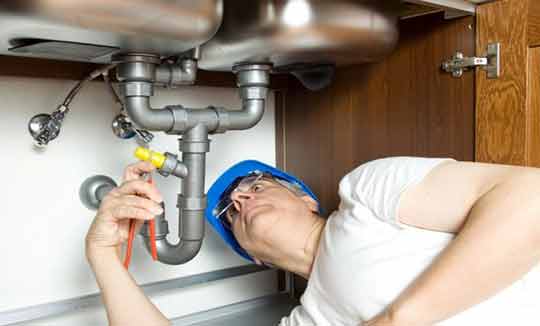
If you just got your water bill and noticed it is two or three times higher than before, there can be only one explanation. Unless the utility company increases its rates, a higher water bill is usually because of a plumbing leak.
The leak could be inside your home; as Haas Properties explains, the most common leaks in the home are a leaky faucet and a running toilet. The leak could also be outside the house; in your main water line (the pipe that transports water from the utility company into your home).
How do you identify the cause of your high water bill? Below are steps homeowners or renters can take to troubleshoot their home’s plumbing to find the leak causing a spike in their water bill.
High water bills in your home: how to fix the problem
You will want to identify potential leaks that may be pushing up your water bill. When you find the leak, depending on what kind of leak it is, you can fix the problem yourself (if it is a minor issue) or get your local plumber to deal with it.
Step one
Turn off all faucets in the house. Find your home’s water meter; it will probably be in front of the house, close to the curb. It may also be at the back of your home if you have an alley behind your house. Look for a concrete or plastic box marked “water.” Lift the lid off the box to gain access to the water meter. Remove any debris inside the box and raise the flap to reveal the face of the meter.
Step two
On the face of the water meter, you will see a red dial, a blue snowflake dial, and a counter. One rotation of the red dial means that one cubic meter of water has passed through the water meter. The counter records the total amount of water that passes through the water meter. The blue snowflake dial, the low flow indicator, registers the slightest water flow inside the water meter. With all faucets in the home turned off, the snowflake dial should not be moving. If it is moving, you can be sure of a leak.
Step three
To know if the leak is inside the home or in the main water line to the house, turn off the main water shutoff valve for the house (a valve with a red or green handle or knob). If you have a basement or crawlspace, the main water shutoff valve will often be in those places. The likely location of the shutoff valve for homes with a slab foundation is the garage or near the water heater. If you don’t find it in those locations, look outside, maybe near an external faucet.
Step four
Recheck the water meter after you turn off the main water shutoff valve. If you still see movement in the low flow indicator, the leak is in the main water line to the house. In that case, your only option is to get a professional plumber who will find and fix the leak. But if the low flow indicator stops moving when you turn off the main water shutoff valve for the house, it means the leak is inside the house.
Step five
The next step is to find the leak inside your home. The first two places to look are your toilet and faucets. Dripping faucets and running toilets are the two significant causes of high water bills in the house. A running and dripping toilet can easily waste hundreds of dollars worth of water. One faucet leaking at the rate of ten drips per minute will waste 347 gallons of water a year.
Step six
Use the dye test to check if your toilet is running. Remove any products that might change the color of the water. Clean the toilet bowl and tank. Add food coloring to the tank until the water changes color completely. Wait 30 minutes to see if the color shows up inside the bowl. If it does, your toilet is running. This problem is often from faulty components inside the tank. You can fix it yourself.
Step seven
If the toilet is not running, you will need to check the faucets in your home to see if any are dripping. A dripping faucet often results from a broken washer, damaged cartridge, decomposed O-ring, or worn-out valve seat. You don’t have to replace your faucet if it is dripping. You only need to disassemble it and replace the damaged components with new ones. That is something you can do yourself.
Step eight
After fixing your faucet or toilet, turn off all the faucets in the house and recheck the water meter. If you still see movement in the low flow indicator (the blue snowflake dial), it is time to get a plumber to check your plumbing. There could be a hidden leak inside the walls of your home.

